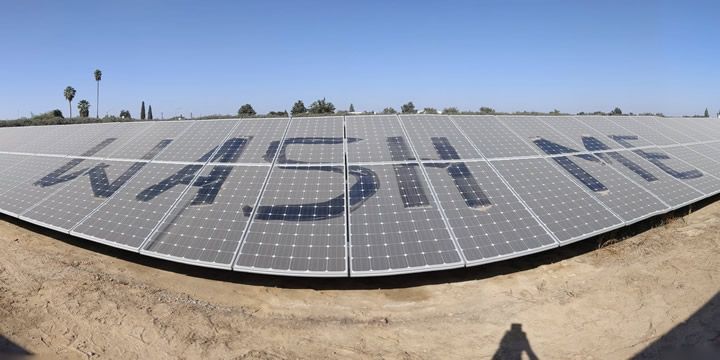RST is a fully automated panel cleaning technology with no moving parts that you can control from a cell phone or desktop. As a result, RST can clean panels multiple times a week, essentially eliminating soiling losses.
 Automated Solar Panel Cleaning
Automated Solar Panel Cleaning

Q&A with Matthew Casey, Owner and Head of Business Development | RST CleanTech
Tell us about yourself and your role with RST CleanTech.
I’ve been working in the renewable energy industry for almost 20 years. Currently I am the owner and head of business development for RST CleanTech USA, LLC. Early in my career I developed and helped build wind projects in New York, Texas, and Chile and also served on the California Wind Energy Association Board. More recently, I was a director at Sunworks, managing the development and installation of commercial and industrial (C&I) assets in Southern California.
What is soiling and why is it an important issue for solar owners? Why is it not discussed more?
Soiling refers to airborne pollution or dust buildup that can block sunlight and lower solar energy production. This loss in production can be significant. The International Energy Agency (IEA) forecasts that soiling will be responsible for over half a billion dollars in solar production losses across the US in 2023 (“Soiling Losses - Impact on Performance of Photovoltaic Plants”). This is a shame since so much funding is put into building solar infrastructure.
We have a long way to go to rein in these losses. Soiling losses are not widely understood and asset owners continue to pay the price for that. For example, in kWh Analytics’ “Solar Risk Assessment: 2021,” FracSun established that solar estimates by independent engineers are wrong 99.5% of the time compared to on ground estimates. This is a staggering rate if one considers that most major financiers rely on these estimates from independent engineers. And the effect on project expectations can be profound. Solar assets throughout the US are producing roughly 15% less than their expected output according to kWh Analytics’ Solar Generation Index for 2022. Much of this is associated with a misunderstanding around soiling losses.
With stats like these, one would expect soiling to be discussed far more frequently. There appears to be a few critical reasons that are preventing the industry from tackling this issue. First, the solar industry particularly in the non-utility space is primarily driven by the Investment Tax Credit (ITC) which rewards companies for prioritizing the investment in building solar. As a result, the focus is on getting projects in the ground, not on their performance. The introduction of the Production Tax Credit (PTC) in the Inflation Reduction Act (IRA) is certainly a step in the right direction but we are still finding out if this will make an impact for most solar projects.
Another reason soiling is not discussed more is that consumers are not adequately informed. Production assumptions are often taken at face value. Resources like NREL’s PV Watts should be used more often. Perhaps more importantly, consumers should be looking at the project value in terms of $/kWh not $/W. The $/kWh represents the monetary value of energy produced over the project’s lifetime, also known as the levelized cost of energy (LCOE). This is a much better metric on a project’s overall value compared to looking at the cost of the panels installed.
A third reason is that the companies that can afford to assemble this data do not share it. This is especially the case with utility scale asset owners. Information on soiling data is a competitive advantage allowing these companies to bid more aggressively and also avoid projects where there is high soiling.
What do we know about soiling and how should we think about it?
A full dissertation could be written on this question. The aforementioned IEA report on soiling losses is an excellent resource. In short, soiling is regional and different soiling materials (dirt, pollution, pollen, bird excrement, etc.) accumulate differently on solar panels. Soiling for asset owners is best understood through “soiling rates” – the amount of energy production lost each day due to soiling. In agricultural areas in California, we see soiling rates for the majority of the year around 1% per day. That means that in 10 days after a manual cleaning, those panels are already losing 10% production - yikes!
Soiling rates are not consistent and vary throughout the year. In California, we see soiling rates double or triple from the beginning of the year to the end of the year when the first rains come.
As a last note here, it would be a shame not to mention the major misconception that rain washes the dirt off solar panels. Rain can actually have the opposite effect. Light rain can actually cause dirt to cement on solar panels in a process called “cementation”. We see cementation in California resulting in roughly a 10% energy loss fairly consistently in agricultural areas. We often run up against residential sales people that say panels are “maintenance free.” Why do we have car washes then?
How does RST work and why is it disruptive to the industry?
RST is a fully automated panel cleaning technology with no moving parts that you can control from a cell phone or desktop. As a result, RST can clean panels multiple times a week, essentially eliminating soiling losses. It is disruptive to the industry for this reason - we recover all those soiling losses between manual cleanings and optimize solar panel performance. Cleaning is no longer a service but a product that pays for itself. Additionally, we protect the panel warranties by cleaning in the middle of the night. This avoids thermal stresses on panels that void panel warranties, especially on larger projects that have cleaners still working into the daylight hours of the day. This is a major protection for asset owners.
Here’s how it works: our proprietary nozzles affix to solar panels via patented clips. Water that has been filtered through a patented self-cleaning electrolysis system is fed to the nozzles via high density UV resistant polyethylene tubing. From a smartphone, the system owner can schedule as many panel cleanings as needed.
Share with us what is involved in setting up a retrofit RST system.
Regardless of whether the solar array is old or new, the process for installing RST is the same. We connect to standard 120V/5 Amp service and require standard 60 PSI, 50 gallons per minute (gpm) flow rate of water. Once we have these services in place, we then find a vertical place for our controls and filtration and deliver our HDPE pipes to the field via trenching or pipe supports (often on roofs). RST does require a 2'' space above each panel for installations. Water usage is surprisingly little and RST technology has been permitted even in Los Angeles amidst the historic drought that California was once in.
What do financial returns look like for a typical RST system?
Payback periods for new projects that qualify for the ITC are typically 1-2 years for projects in the 1MW range. Whereas the payback period is roughly 2-3 years when retrofitting old projects in the 1MW range.
Why should a solar installer offer a solar panel cleaning system on all new projects? What returns can they expect?
The simple answer is that RST technology optimizes production for the solar panel owner while protecting warranties. We should all want that for our customers. There may be more compelling reasons for installers –installing RST sets a bid apart from their competition. Instead of getting beat down on $/W, the installer can discuss quality and performance with “self-cleaning panels” ; the sale becomes a value sale where higher margins can be achieved. For those worried about increasing the $/W, RST can be a separate line item in the bids but installers that don’t offer it as an option to customers tend to do better for aforementioned reasons. Returns for installing and using RST vary widely depending on the sale structure of the installer. In general, customers are generally willing to sign-off on and pay more for a higher value product which adds to the broader project margin.

About Matthew Casey
Matthew brings over 15 years of renewable energy experience to the RST Team. Matthew started in the wind industry where he was instrumental in developing over 100MW of wind projects and constructing over 1.5GW of wind projects in both New York, Texas, California, Chile, and Mexico and served on the board of the California Wind Energy Association. More recently, Matthew managed both sales and operations teams for over 70 commercial/industrial solar projects in California. Matthew has a Mechanical Engineering degree from Bradley University and a Masters of Sociology from the University of Chicago.
The content & opinions in this article are the author’s and do not necessarily represent the views of AltEnergyMag
Comments (0)
This post does not have any comments. Be the first to leave a comment below.
Featured Product

